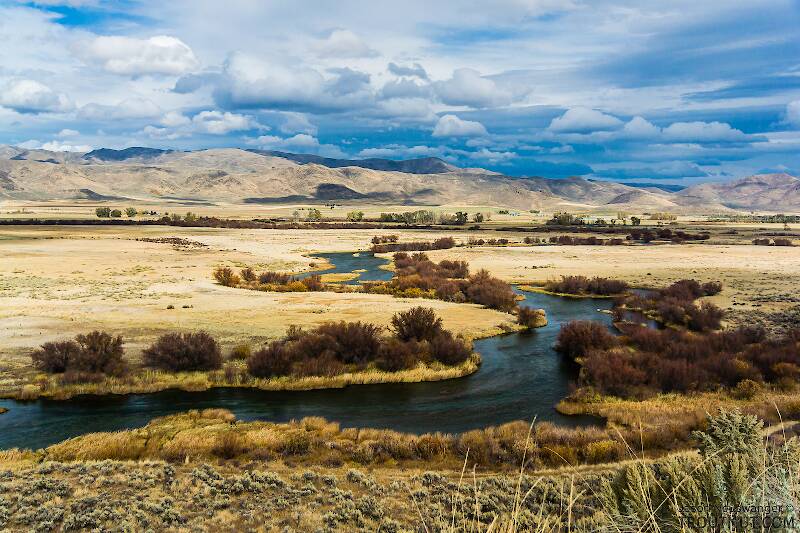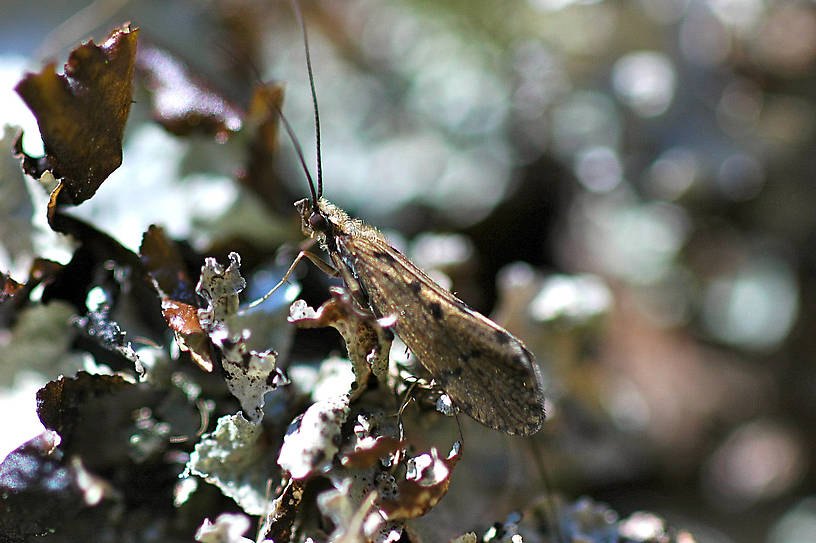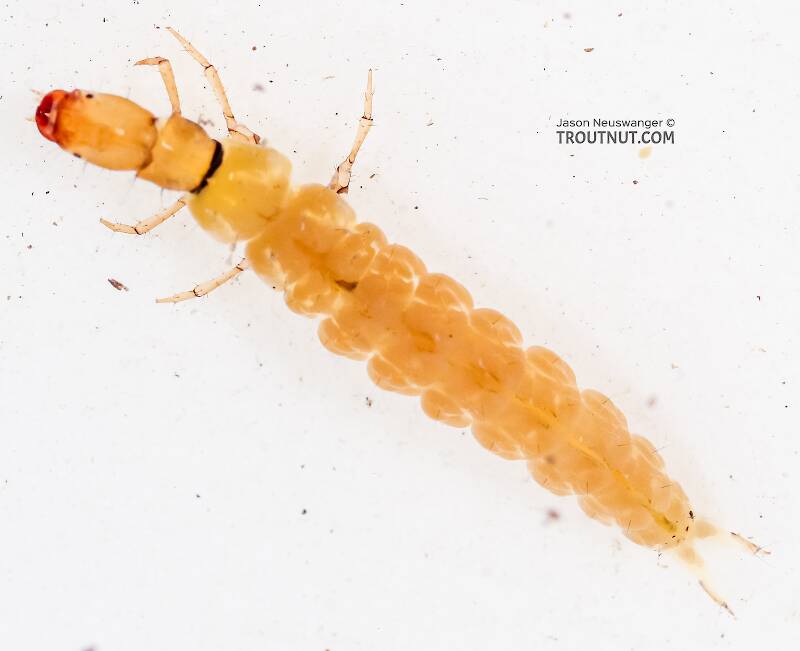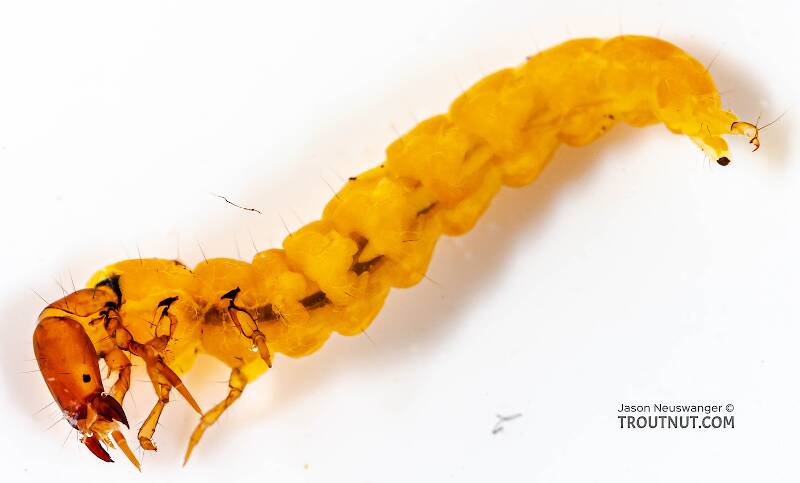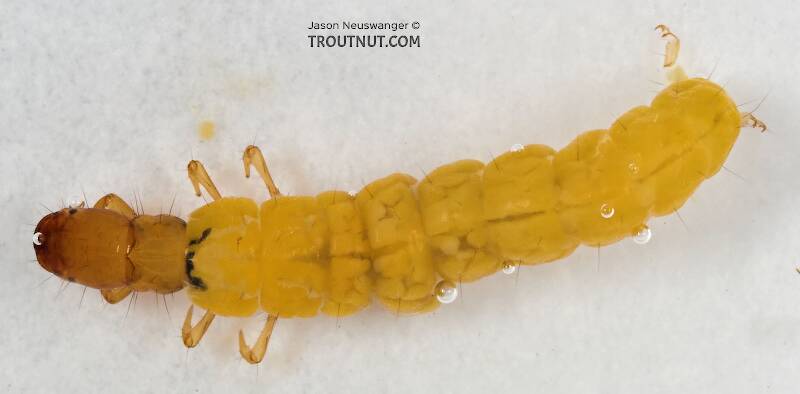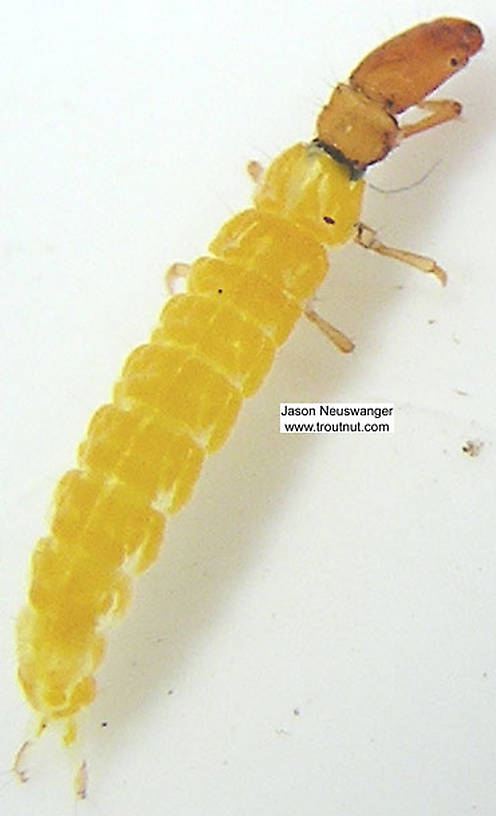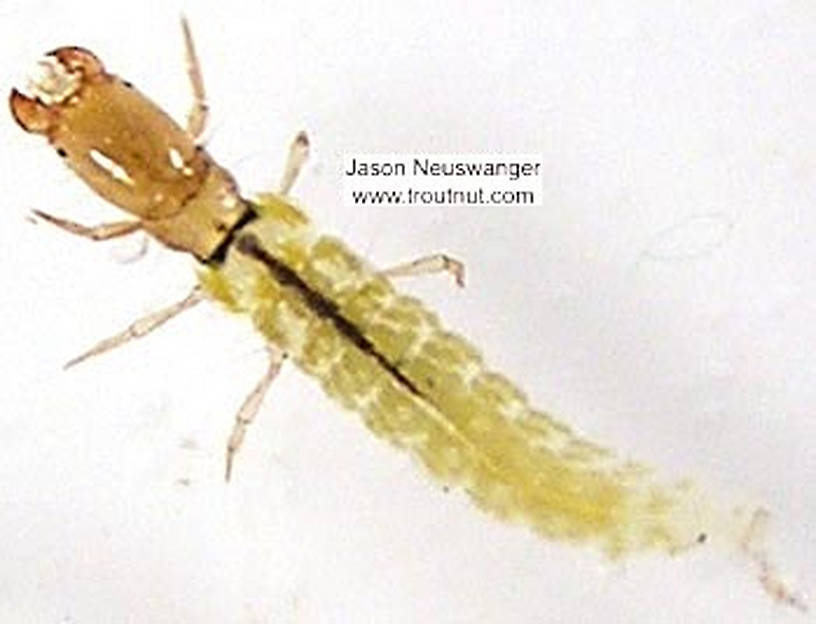
Hex Mayflies
Hexagenia limbata
The famous nocturnal Hex hatch of the Midwest (and a few other lucky locations) stirs to the surface mythically large brown trout that only touch streamers for the rest of the year.
Featured on the forum

This one was surprisingly straightforward to identify. The lack of a sclerite at the base of the lateral hump narrows the field quite a bit, and the other options followed fairly obvious characteristics to Clostoeca, which only has one species, Clostoeca disjuncta.

Troutnut is a project started in 2003 by salmonid ecologist Jason "Troutnut" Neuswanger to help anglers and
fly tyers unabashedly embrace the entomological side of the sport. Learn more about Troutnut or
support the project for an enhanced experience here.
Caddisfly Family Philopotamidae
Emergence and egg-laying behaviors vary widely within this family of net-spinning caddisflies. Some species, like Dolophilodes distinctus, have very unusual quirks. That species and Chimarra aterrima are two of the most important in this family.
Where & when
In 833 records from GBIF, adults of this family have mostly been collected during June (25%), July (19%), May (18%), August (13%), September (8%), and April (6%).
In 260 records from GBIF, this family has been collected at elevations ranging from 26 to 10322 ft, with an average (median) of 2280 ft.
Family Range
Larva & pupa biology
Shelter type: Very fine-meshed nets
Specimens of the Caddisfly Family Philopotamidae
1 Adult
1 Male Adult
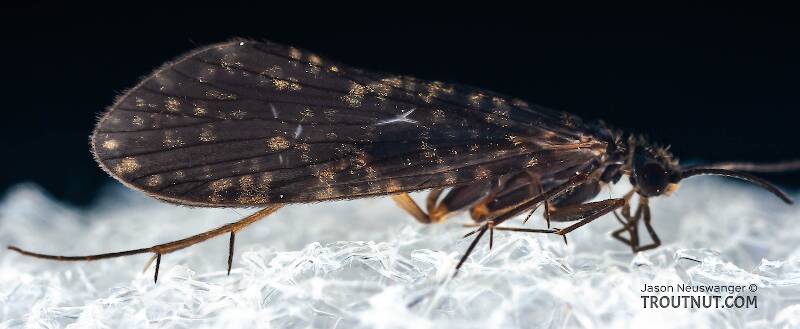
This caddis species was dancing high over the stream, spaced a foot or two apart across most of its width, very much like Ephemera mayfly spinners but with more side-to-side motion mixed in. There were more than enough to get the trout interested, but I wasn't able to stick around until they fell on the water (if they did at all).
1 Female Adult
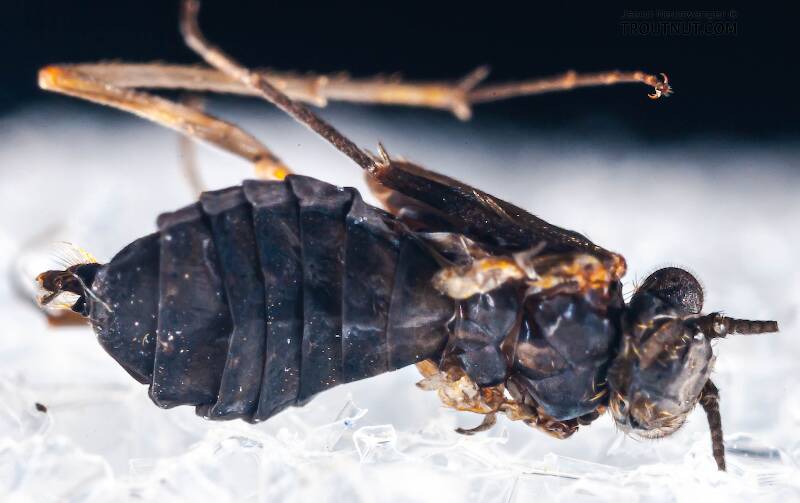
This is a really strange specimen. I would guess it's one of the dry caddis pupa that scoots across the surface of the water as a pupa rather than emerging right away. Its "wing pads" sure don't look right, though. Maybe they're deformed and that's why I was able to find this one as a pupa in the first place. It also looks like it might be a caddis adult missing its wings, but since I found three of them, that kind of rules out such an anomalous maiming.
I found this one and one other on a midstream rock. The previous day, I caught a similar creature kicking around on the water's surface.
This one died and shriveled a little bit before I could photograph it, but it's basically in its original shape.
I found this one and one other on a midstream rock. The previous day, I caught a similar creature kicking around on the water's surface.
This one died and shriveled a little bit before I could photograph it, but it's basically in its original shape.
5 Larvae
Discussions of Philopotamidae
Emerger pictures anyone???
5 replies
Last reply on Apr 9, 2018 by Gazzer
I would like to see a picture of an emerging Chimarra or a pupa stage before emerging if anyone has one. I am baffled and curious to how and when they change from a yellow/orange larva to a black adult fly. Also, what would be a good emerger pattern for this fly? Lafontaine emerger in what color?
ovipositing?
6 replies
Posted by Btopbuckeye on Mar 4, 2015 in the genus Chimarra
Last reply on Mar 6, 2015 by Crepuscular
I had a large swarm of black sedges in a size 16 ovipositing today.the females hadvblack wings and body with a green egg sack was just wondering if that is this genus or something totally different
Pupa color?
6 replies
Last reply on Apr 5, 2012 by Entoman
Seems like dead drifting the pupa pattern during the emergence time is a good way to fish this before the adults are on the water.
Does the pupa retain the orange color of the larva or do they have the color of the adult?
Does the pupa retain the orange color of the larva or do they have the color of the adult?
bright green?
1 replies
Posted by Phishheaduj on Jan 12, 2009 in the genus Chimarra
Last reply on Jan 12, 2009 by Taxon
i recently came across with a bright green one of these. Is that the same or a completely different species?
Start a Discussion of Philopotamidae
References
- LaFontaine, Gary. 1981. Caddisflies. The Lyons Press.
Caddisfly Family Philopotamidae
Taxonomy
Genus in Philopotamidae
ChimarraLittle Black Sedges
2
10
DolophilodesMedium Evening Sedges
5
27
WormaldiaLittle Autumn Sedges
0
0
2 genera (Fumonta and Sisko) aren't included.

